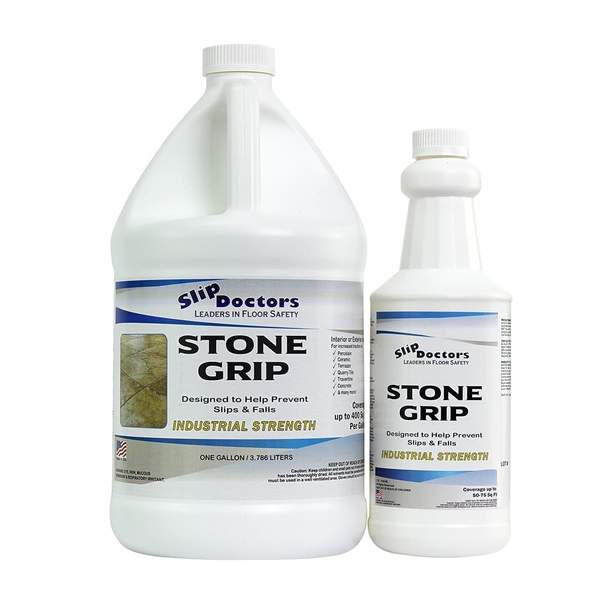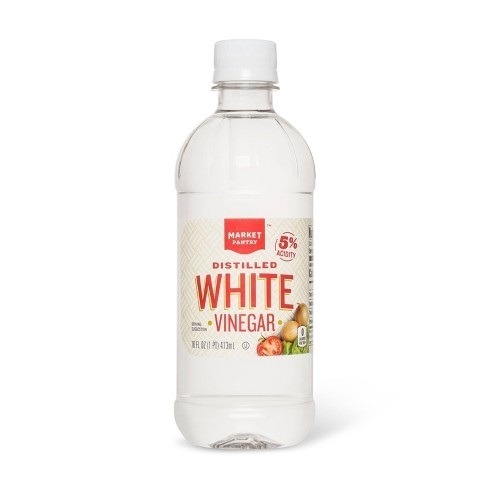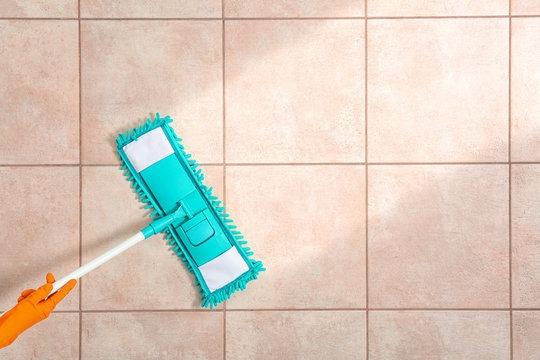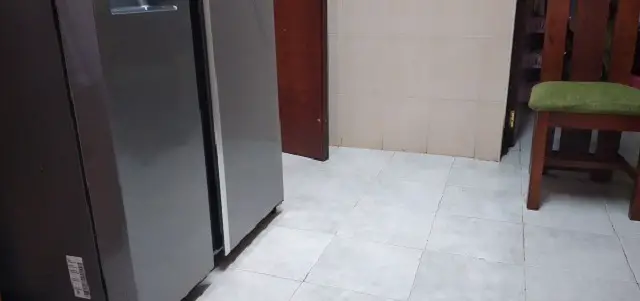Most modern houses have floor tiles in areas such as the kitchen, bathroom, living room, etc. These tiles have both advantages and disadvantages.
Floor tiles hold water better compared to other floor materials. At the same time, floor tiles can get very slippery and, as a result, hazardous.
It is important to make your tile floors safe by minimizing slipperiness and improving traction.
This article features ways you can make your tile floor safe without having to break the bank.
-
Use of Anti-Slip Solution to make tiles less slippery

Anti-slip solutions add texture to your tiles to make them less slippery instead of smooth.
They increase traction by introducing micro treads. With this, you need not worry about falling and slipping on the slippery tiles.
Benefits of Anti-slip solutions
- Creates a highly- resistant anti-slip coating on the tiles
- Increases traction
- Makes the tile floor safe
- Easy to use
- Does not affect the floor’s visual appearance; however, it depends on the type of anti-slip coat you apply
- It is a fast process that takes about half an hour
How to clean tiles with an Anti-Slip Solution
- Pour the anti-slip solution in a spray bottle.
- Apply the tile solution by spreading with a mop, ensuring to cover all the tiles with the anti-slip solution.
- Allow the solution to settle for 15 minutes. Don’t let it stay for longer as it will cause damage to the tiles.
- Rinse the mixture off the floor with clean water and a clean mop. Dry with a clean towel.
-
Anti-slip treads
They are also known as grip treads. It is not only a simple method but also cost-friendly. Another advantage of the treads is that they aren’t permanent.
You can stick them on the surface when needed and remove them at your own will without altering or damaging the surface.
Disadvantage:
Anti-slip treads aren’t as durable as non-slip solutions. Most are of poor quality that doesn’t attach well to the surface or chip off after a short while.
They also alter the original appearance of the tiles.
3. Non-Slip Rugs
No products found.
Non-slip rugs are most likely the fastest and easiest method to make your tiles safe. Rugs generally make the floor cozy and also brighten the room with its color and material.
Not all rugs are secure, as some can cause tripping. There are rugs with non-slip backing to prevent slipping on a slippery floor.
Instead of getting one from the shop, you can customize one on your own. Draw criss-cross lines using hot gun glue on the back surface and let it dry.
This, however, will not work on all types of rugs. Be sure to test before use.
4. Substitute Old Tiles with Non-Slip Ones
It is unreasonable to substitute the whole floor tiles just to make them less slippery. However, if you have your tiles worn out or plan to replace them, consider having non-slip tiles.
They are pretty much expensive and time-consuming to install, but they are worth it.
Also, the economic and other costs of treating injuries occasioned by slippery tiles may outweigh the cost of a replacing the tiles. You cannot really attach a cost to safety.
Using vinegar and water solutions to make kitchen floors less slippery
Floor tiles add some class and sophistication to your room until they get discolored by dirt and stains.
Cleaning tile floors to minimize slipperiness can be very tricky, especially because of the existence of a variety of detergents and cleaners in the market that can damage your surface.
You no longer have to worry anymore as there is a simple home-made solution that’s safe to use with the tiles.
The use of vinegar solution is effective and friendly to your tiles, unlike other commercial cleaning agents.
Moreover, vinegar solution makes your tiles less slippery by getting rid of slippery agents as well as increase friction.
How to use vinegar solution to clean tiles

Add hot water in a bucket:
Two gallons of water is enough, but you can add more gallons of water for larger floors. The warmer the water, the better it is in loosening stuck dirt.
Ensure to remove all appliances, furniture, and other objects that may act as obstructions during the cleaning process.
Add distilled white vinegar:
Add vinegar to the water in the ratio of one cup for every gallon of water. Stir the vinegar solution gently till it is well blended.
Vinegar, which is acidic, dissolves stubborn stains and residue. Apple Cider Vinegar can also be a substitute for white vinegar.
Diluting the vinegar prevents the bleaching of the color of your tiles or wearing off of the finish.
Mop the tiles with the vinegar solution:
Mop across the tiles in a circular or side to side direction. Ensure to touch every bit of the floor, including beneath in-built furniture.
The result of the vinegar solution should be instant. Avoid contact of the solution with neighboring wood or carpet floor.
Rinse the floor with clean water:
Empty the bucket and add clean, warm water. Work through the surface as you wring and wet the mop after a few steps to eliminate loose residue and any vinegar traces.
Dry the floor with a mop or a towel. Failure to rinse the floor will leave streaks on your tiles hence damaging its appearance.
Ensure the floor is completely dry to avoid the growth of mildew and mold.
Maintaining the tile floor

Often clean tile floors:
Sweep the floor or vacuum it regularly to avoid the accumulation of debris. Furthermore, mop at least once a week to keep it clean.
Neglected tile floors accumulate dirt build-up and stains that make it hard to clean and increase the surface’s slipperiness.
Wipe up spills immediately:
Spills left to lie on the floor are dangerous as they can cause slipping as well as the formation of stubborn stains.
Wipe off the spill immediately with a cloth dampened with warm water and vinegar solution. If there were any food particles, first sweep it away.
Avoid the use of chemical cleaners:
Tile floors are easy to clean but can get damaged easily. The use of harsh chemicals such as bleach can cause the fading of the natural tile materials.
It is better to opt for a vinegar solution when in doubt of a cleaning agent.

